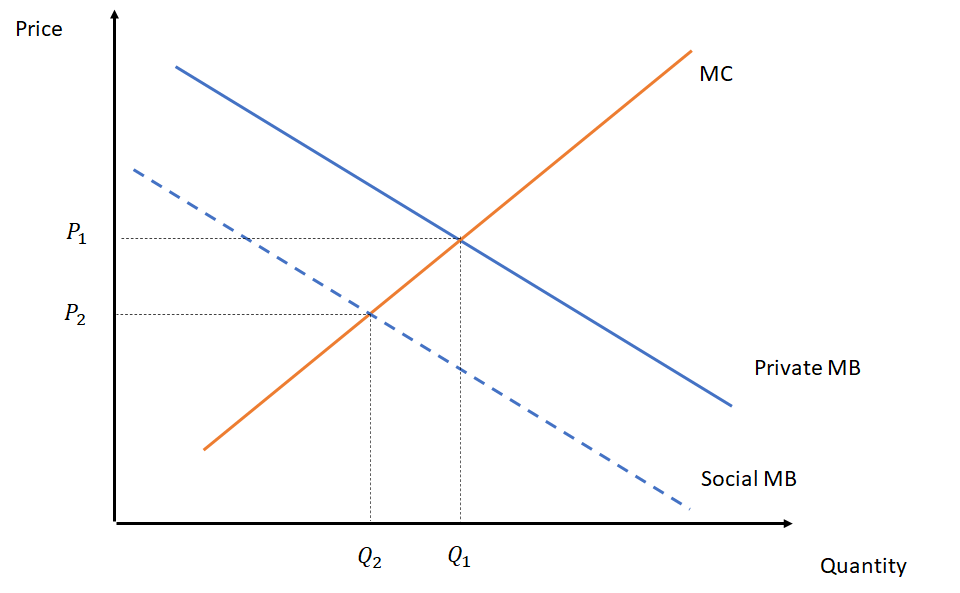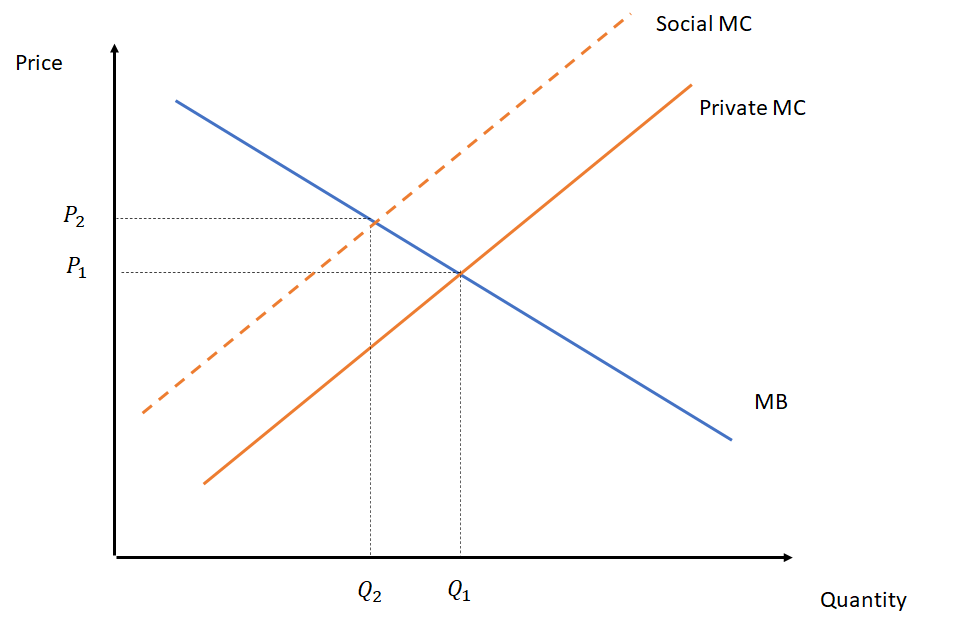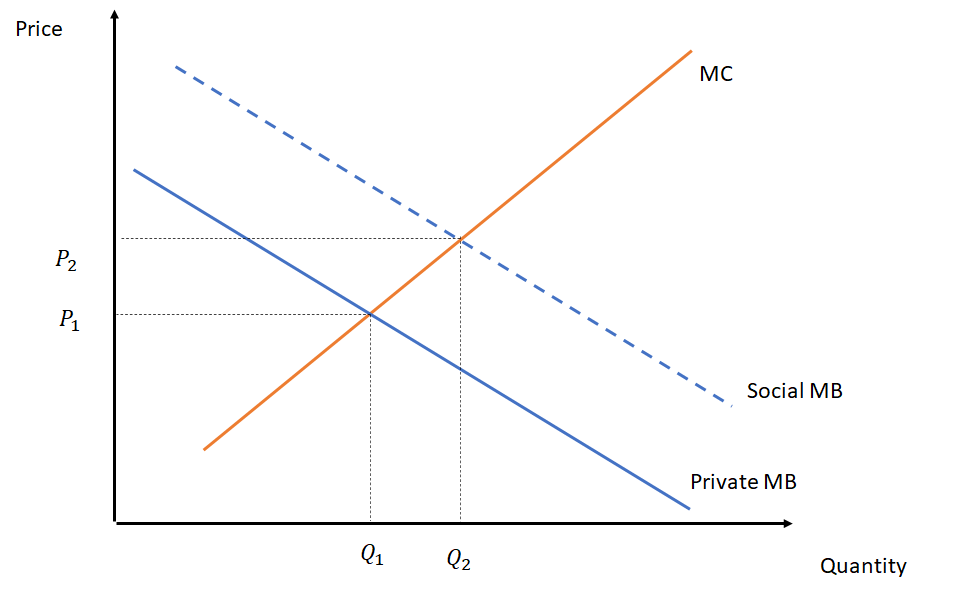If you have ever lived in an apartment building, you have probably encountered them: the noisy neighbors. Whether it is running the vacuum or playing loud music at 1 am, most of us will grumble when our neighbor keeps us up at night. What you are experiencing is not only detrimental to your sleep, but also an example of something economists call a “negative externality”.

What are externalities and why do they matter?
Externalities are spillover costs or benefits from one individual to another. In the case of a negative externality, the person engaging in an activity or transaction causes an indirect cost for others. In the case of our noisy neighbor, their loud music is keeping us awake. This is a side-effect which they are not taking into account when setting the volume on their stereo. Thus the benefit to your neighbor, the private benefit, is higher than the benefit to society overall. This is illustrated by the solid and dashed blue lines in Figure 1. As a result, the quantity of loud music consumed by your neighbor, Q1 , is greater than the quantity that would have been chosen, had they taken into account the negative spillovers on you, given by Q2 .

Another textbook example for negative externalities is pollution caused by the production of a product. While the firm takes into account their own costs of production such as raw materials, labor or energy, they do not take into account the costs associated with the resulting air pollution: medical costs due to increased occurrence of asthma, decreased property values, etc. The private costs to the firm are indicated by the solid red line in the figure below, the true cost to society is represented by the red dashed curve. The firm chooses to produce a quantity Q1 , whereas the socially optimal quantity is given by Q2 .

In both cases we see that failure to take into account the spillover effects leads to quantities chosen by the individual or the firm that are greater than what is optimal for society.
What do Covid vaccinations have to do with this?
So far I have given you examples of negative externalities. Covid vaccinations on the other hand are an example of positive externalities. Here, the benefit to society is greater than the benefit to the individuals who receive the vaccine. In the past few months, you probably have heard medical experts talk about “herd immunity”. Herd immunity occurs when a sufficiently large percentage of the population is immune to a virus, making the spread of the virus less likely.
A simulation by Simon Scarr and Manas Sharma illustrates how vaccination helps to control the spread of a virus. In Figure 3, every small square represents an individual in a community of 9000 people. The purple squares indicate that an individual has been vaccinated, while an orange square stands for a person infected with the virus. Grey squares are unvaccinated individuals. The sliders at the top allow us to change the percentage of the population that has been vaccinated, the infectiousness of the disease and the vaccine effectiveness. Figure 3 illustrates the simulation outcome for a Covid vaccination rate of 70%, a rate of infection of 2.5 and a vaccine effectiveness of 90%.

As we see, due to the high percentage of vaccinated individuals, there are only a few clusters of infection (indicated by the orange squares). The unvaccinated segment of the population, the grey squares, have been protected by those who are vaccinated. This is what economists call a positive externality.
The economics of vaccinations
As we have just seen, getting a covid vaccine is associated with a positive externality. If I get a covid vaccine, the benefit to society is greater than my personal benefit, as each vaccinated person helps protect unvaccinated individuals through herd immunity. This effect is shown in the figure below, where the solid blue line shows the personal benefit to the individuals that get vaccinated and the dashed line represents the higher benefit to society.

In this case, we see that Q1 individuals choose to get vaccinated. This number falls short of the socially optimal number Q2.
Covid Vaccinations: What can be done?
So how can we encourage more people to get vaccinated? While public service announcements may help, an economist will offer an alternative suggestion: Pay them.
If we paid every individual that gets vaccinated the difference between social and private benefit, then the gap between the two lines would go away. Private benefit would equal the benefit to society and we’d arrive at the desired number of vaccinations.
This is exactly what some companies are doing right now. Trader Joe’s, Dollar General and Aldi, among others, offer additional pay to workers if they get vaccinated.
To learn more about basic economic principles and how they apply to everyday issues, become a Buff and take economics courses.
Anne-Christine Barthel, Ph.D.
Assistant Professor of Economics and Decision Management


